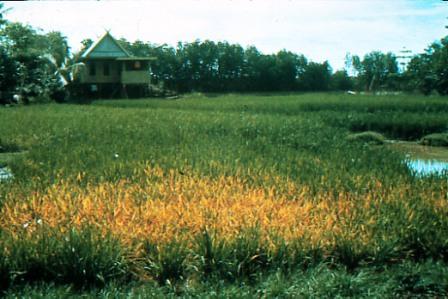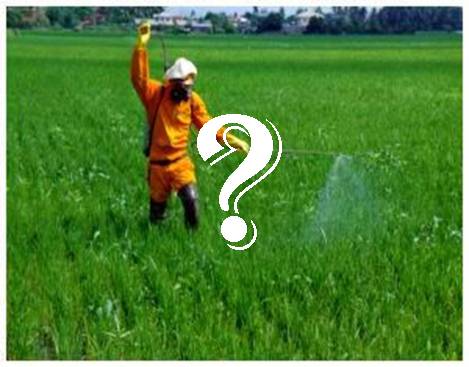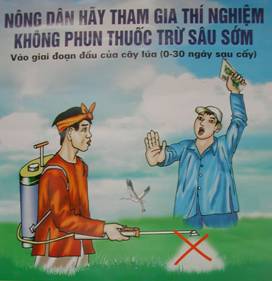|
|
|
Pest management |
|
||||||||||||||
|
|
|
|
|
||||||||||||||
|
|
|
Insects |
|
||||||||||||||
|
|
|
|
|
||||||||||||||
|
|
|
Understand the value of IPM in dealing with insects |
|
||||||||||||||
|
|
|
How do insects reduce yields?
By physical damage: Insects reduce leaf area, and damage panicles and stems.
By spreading diseases Many insects (e.g., green leaf hopper) spread viral diseases like tungro.
Some insects like brown plant hopper cause direct damage (hopper burn).
|
|
||||||||||||||
|
|
|
If you see insect damage consider the following:
|
|
||||||||||||||
|
|
|
Are pesticides the solution to deal with insects?
In a rice field, hundreds of species of insects, spiders, and other organisms are linked in a food web. Many insect pest problems in tropical rice have been found to be disruptions of this food web by weather extremes, cultivation practices, and pesticide use.
Based on scientific evidence, it is questionable whether routine insecticide treatment of rice is needed to protect the crop. In surveys of rice farmers in the Philippines,untreated fields yielded as much as fields treated with one to five or more pesticide applications. Sometimes pesticides can even cause pest outbreaks. Click here for an example out of Thailand.
Spraying pesticides may even cause more damage as you also kill insects that are helpful!
|
|
||||||||||||||
|
|
|
The solution to deal with insects is through IPM
Based on experience and research findings during the 1970s, the advantages of combining several tactics in IPM systems instead of relying only on insecticides or host plant resistance became clearer.
In the meantime, thousands of rice farmers have learned to use IPM principles in their rice fields. Although this represents the largest crop-specific group of farmers practicing IPM anywhere in the world, it is still only a fraction of the total number of rice farmers in Asia. |
|
||||||||||||||
|
|
|
Asian rice farmers often spray insecticides during the first 30-40 days after transplanting or seeding. Their main targets are leaf-feeding insect pests. The rice crop, however, can usually recover from early-season insect injuries with no significant loss in production.
Insecticide spraying during this early period increasingly appears to be unnecessary and can lead to secondary pest problems, such as brown planthopper. In Vietnam, farmer experiments on withholding insecticide sprays during the first 30-40 days after seeding helped to motivate the government’s decision makers to endorse the “no early insecticide spray” rule as a standard practice in rice production. (see picture below)
IPM in Vietnam: This posters explains rice farmers in Vietnam not to spray insecticides in the first 30 days after transplanting.
|
|
||||||||||||||
|
|
|
Always consider the economics!
All losses and actions must be balanced against the cost. Calculate the amount of grain required to cover the cost of the application. Will you lose this much?
|
|
||||||||||||||
More information |
|
Click on the icon to open a manual with more information on:
Click on an icon to open a fact sheet with specific information about the following insects:
|
|
||||||||||||||
Next lesson |
|
In the next lesson we will discuss the pest of weeds. |
|






